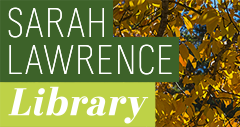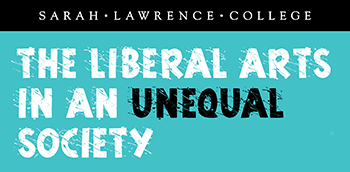Event Title
Getting to ‘Somewhere Else’ Without A Map: The Role of Liberal Arts Institutions in Addressing Educational Inequality in K-12 Schools
Location
Donnelley Theatre, Heimbold Visual Arts Center
Start Date
15-11-2014 10:45 AM
End Date
15-11-2014 11:15 AM
Abstract
Sixty years since Brown v. Board of Education—what to make of the educational landscape and our civil rights imperatives? Brown was driven by a perception that “green followed white.” If that is still the case, what role for liberal arts institutions and what role for the liberal arts? In this presentation, I will explore the heightened tension among critical education forces—equal access to the markets of a global society; equal access to the culture of liberal arts institutions; and the disconnect between the worlds of liberal arts institutions and the K-12 worlds of our urban poor. Alice’s visit with the Red Queen in Through the Looking Glass, illustrates the unending effort to move, like Alice, from “here” to “somewhere else.” I intend to challenge liberal arts institutions to get out there and be more visible in the land of K-12 instruction and learning. If that cannot be done, we will flounder amidst the politicians who know little, and the liberal arts will continue to be a noble concept—still critically important to a democracy, but ultimately serving ever-shrinking elites. We need liberal arts places that continue to honor liberal arts traditions, and help young adults learn and grow into people who are increasingly able to be independent and critical thinkers—but we need for these places to draw a more diverse crowd, engage more students in knowing what it means to be participants in a diverse society, and, most important, weigh in on conversations about how our K-12 schools and districts should be doing the same. Way too many of our K-12 schools and school leaders are in the pedagogical toilet, and without being called on to change antiquated practices—and having mentors and coaches available at all higher ed institutions—including liberal arts schools—I fear things will remain largely the same, and, 80 and 90 years after Brown, we’ll be singing the same tune. These issues will be explored in general and with specific reference to the Yonkers desegregation case, focusing on the limitations of court action, the evolution of federal programming, and the journey of running and standing still over the last 40 years in the world of civil rights and educational reform.
Presenter Biography
Joshua Bogin has served as Director of Magnet School Programs in the Springfield (MA) Public Schools since 1996, overseeing the creation of new magnet schools featuring themes ranging from Expeditionary Learning to STEM and STEAM, International Baccalaureate, Montessori, Visual and Performing Arts, among others. Prior to his work in Springfield, Mr. Bogin was a senior project associate at NYU’s Title IV Equity Assistance Center, providing technical assistance to school districts in New York and New Jersey dealing with equity issues arising in the areas of race, gender and language. From 1977-87, Josh served as a senior trial attorney with the Civil Rights Division of the US Department of Justice, litigating school desegregation cases throughout the country. Mr. Bogin initiated and was lead counsel on the government’s landmark school/housing discrimination case, United States v. Yonkers Board of Education, crafting, shepherding and overseeing that case from its earliest investigation through the first post-remedial order appellate arguments.
Streaming Media
Getting to ‘Somewhere Else’ Without A Map: The Role of Liberal Arts Institutions in Addressing Educational Inequality in K-12 Schools
Donnelley Theatre, Heimbold Visual Arts Center
Sixty years since Brown v. Board of Education—what to make of the educational landscape and our civil rights imperatives? Brown was driven by a perception that “green followed white.” If that is still the case, what role for liberal arts institutions and what role for the liberal arts? In this presentation, I will explore the heightened tension among critical education forces—equal access to the markets of a global society; equal access to the culture of liberal arts institutions; and the disconnect between the worlds of liberal arts institutions and the K-12 worlds of our urban poor. Alice’s visit with the Red Queen in Through the Looking Glass, illustrates the unending effort to move, like Alice, from “here” to “somewhere else.” I intend to challenge liberal arts institutions to get out there and be more visible in the land of K-12 instruction and learning. If that cannot be done, we will flounder amidst the politicians who know little, and the liberal arts will continue to be a noble concept—still critically important to a democracy, but ultimately serving ever-shrinking elites. We need liberal arts places that continue to honor liberal arts traditions, and help young adults learn and grow into people who are increasingly able to be independent and critical thinkers—but we need for these places to draw a more diverse crowd, engage more students in knowing what it means to be participants in a diverse society, and, most important, weigh in on conversations about how our K-12 schools and districts should be doing the same. Way too many of our K-12 schools and school leaders are in the pedagogical toilet, and without being called on to change antiquated practices—and having mentors and coaches available at all higher ed institutions—including liberal arts schools—I fear things will remain largely the same, and, 80 and 90 years after Brown, we’ll be singing the same tune. These issues will be explored in general and with specific reference to the Yonkers desegregation case, focusing on the limitations of court action, the evolution of federal programming, and the journey of running and standing still over the last 40 years in the world of civil rights and educational reform.


